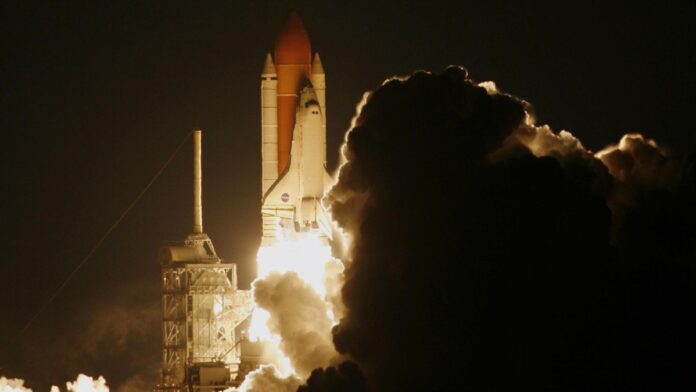
What is Escape velocity?
In physics, escape velocity, ( i.e., the lowest velocity ), is the minimum speed required for an independent, non-propelled object to survive the gravitational effects of a massive body. The maximum velocity required to escape the Earth’s gravitational field or any planet is also known as the migration velocity or the lowest velocity that a body must have to escape the gravitational attraction of a particular planet or another object.
The escape velocity is only required to send a ballistic object on a trajectory that allows the object to escape the gravity of the mass. Apart from this, any rocket or spacecraft also needs a mode of propulsion and sufficient propellant i.e., fuel, to go out of gravity.
Escape velocity formula –
For any spherical star, or planet, at a distance from that body, the escape velocity is calculated by this formula –

OR
Escape Velocity equals under-root 2 multiplied by the universal gravitational constant and mass of the body to be escaped from, divided by the distance from the body’s center of mass to the object.
Escape velocity is denoted by –

Here ‘G‘ is the universal gravitational constant and value of G ≈ 6.67×10−11 m3·kg−1·s−2,
‘M‘ is the mass of the body to be escaped from, and ‘r‘ is the distance from the body’s center of mass to the object.
The relationship is independent of the mass of the object escaping the massive body. Conversely, a body that falls under the force of gravitational attraction of mass M, from infinity, starting with zero velocity, will strike the massive object with a velocity equal to its escape velocity given by the same formula.
When given initial speed ‘V’ is greater than the escape velocity, the object will asymptotically approach the hyperbolic excess speed or infinite speed, In which atmospheric friction (air drag) is not considered. Then the equation will be –

Video Explanation of Escape Velocity
FACT CHECK: We strive for accuracy and fairness. But if you see something that doesn’t look right, please Contact us.
DISCLOSURE: This Article may contain affiliate links and Sponsored ads, to know more please read our Privacy Policy.
Stay Updated: Follow our WhatsApp Channel and Telegram Channel.













